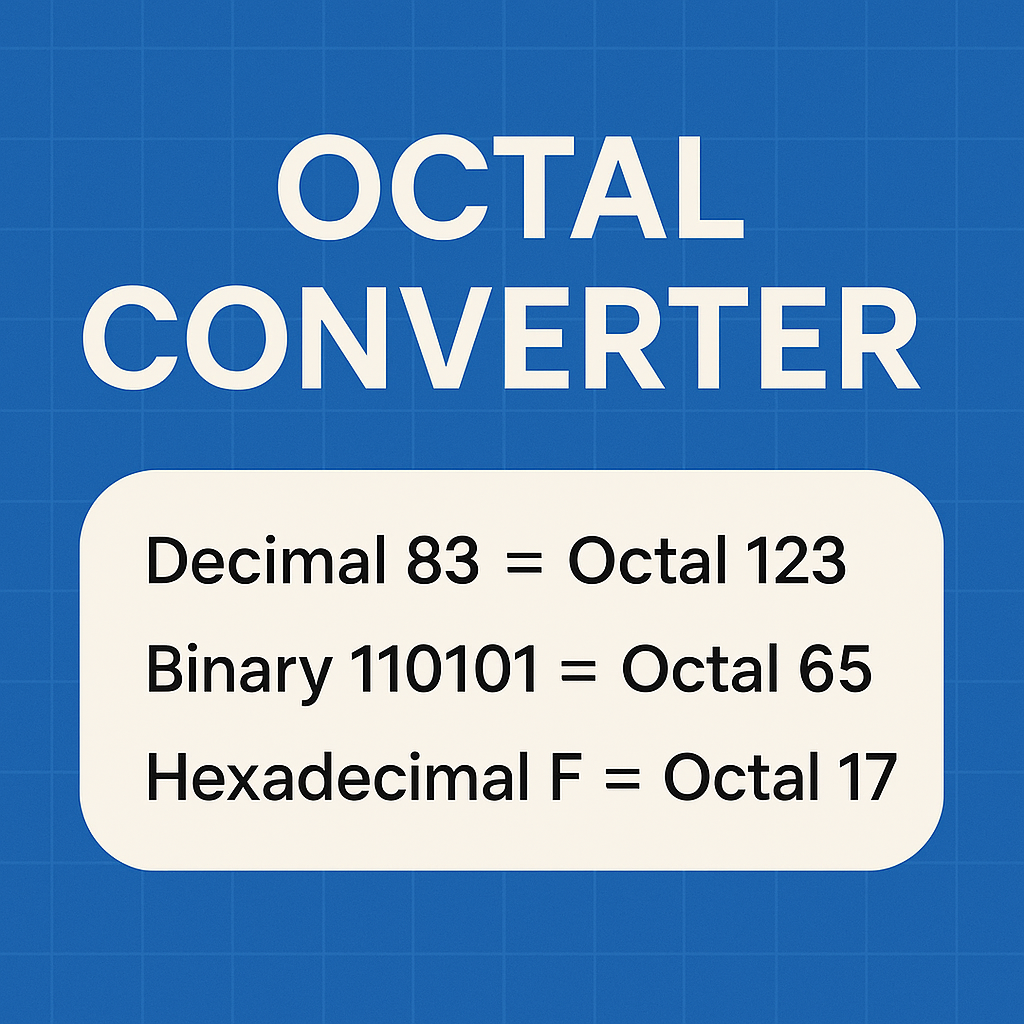
Octal converter
Created on 2 October, 2025 • Converter Tools • 13 views • 2 minutes read
"Learn about Octal Converter, its importance, and how to convert decimal, binary, and hexadecimal numbers into octal. Easy guide with examples."
Octal Converter: A Complete GuideIn the world of computer science and mathematics, number systems play a crucial role. One such system is the octal number system, which uses base 8. An octal converter is a tool or process that helps convert numbers from one system (like decimal, binary, or hexadecimal) into octal and vice versa. This article will explain everything you need to know about octal converters, their importance, and how they work.
What is an Octal Converter?
An octal converter is a tool used to transform numbers from decimal (base 10), binary (base 2), or hexadecimal (base 16) into octal (base 8). The octal system uses digits from 0 to 7, making it simpler to represent large binary values in a compact form.
For example:
Decimal 8 = Octal 10
Binary 1000 = Octal 10
Hexadecimal 8 = Octal 10
This system is widely used in computer programming and digital electronics, especially when dealing with machine-level instructions.
Importance of Octal Conversion
Octal numbers were more common in earlier computing systems, but they are still useful in various applications. Some reasons why octal conversion is important include:
1. Simplified Representation
Binary numbers can be very long and complex. Converting them into octal makes them shorter and easier to read.
2. Legacy Computing Systems
Older computer systems used octal for addressing and instruction representation. Understanding octal is essential for studying computer history and low-level programming.
3. Compatibility with Binary
Since 8 is a power of 2 (2³), octal aligns neatly with binary. Every three binary digits map directly to one octal digit, which makes conversion faster.
How Does an Octal Converter Work?
An octal converter typically performs the following conversions:
### Decimal to Octal
Divide the decimal number by 8 repeatedly and note the remainders. Reading the remainders from bottom to top gives the octal value.
Example:
Decimal 83 ÷ 8 = 10 remainder 3
10 ÷ 8 = 1 remainder 2
1 ÷ 8 = 0 remainder 1
So, Decimal 83 = Octal 123
Binary to Octal
Group binary digits into sets of three (from right to left) and convert each group to its octal equivalent.
Example:
Binary 110101 = (110)(101)
110 = 6, 101 = 5
So, Binary 110101 = Octal 65
Hexadecimal to Octal
Convert hexadecimal to binary first, then binary to octal.
Example:
Hexadecimal F = Binary 1111 = Octal 17
Applications of Octal Converter
Octal converters are widely used in:
Programming and debugging: Developers sometimes work with octal values for file permissions (especially in Unix/Linux).
Digital electronics: Octal numbers help represent circuits in a compact form.
Mathematical studies: Useful for learning number systems and base conversions.
Education: Students use octal converters to understand binary and hexadecimal better.
Conclusion
An octal converter is an essential tool for anyone dealing with computer science, mathematics, or digital electronics. It simplifies binary values, bridges number systems, and helps in understanding low-level programming. Whether you are a student, programmer, or researcher, mastering octal conversion enhances your understanding of numerical systems and their applications.
By learning octal conversion, you build a strong foundation for more advanced concepts in computing and digital logic.
Popular posts
-
Barcode readerMisc Tools • 23 views
-
Color pickerMisc Tools • 21 views
-
SHA-256 generatorGenerator tools • 17 views
-
Exif readerMisc Tools • 17 views
-
Ip LookupChecker Tools • 16 views